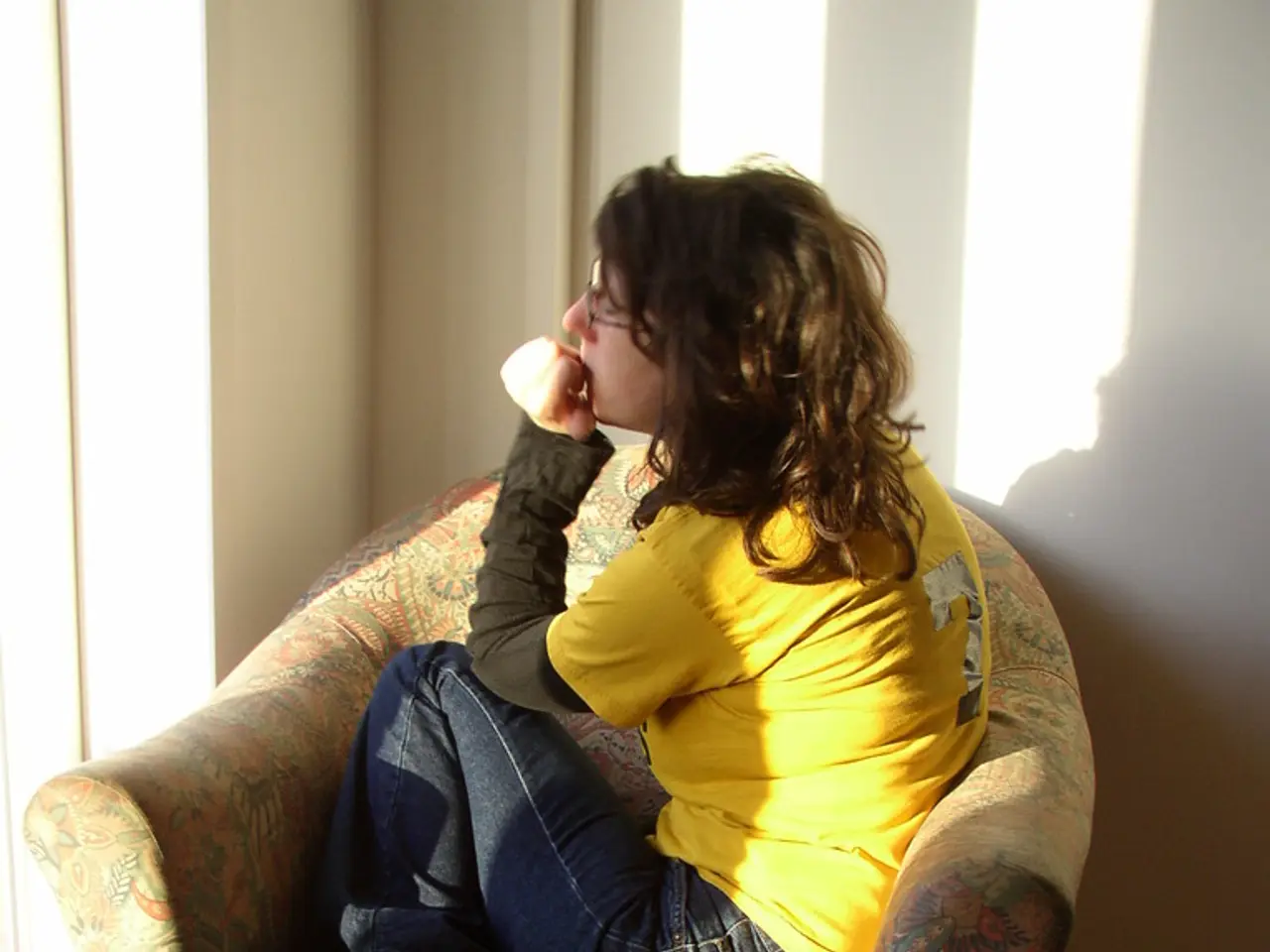Musculoskeletal Disorder: Symptoms, Causes, and Further Details on Dermatomyositis
Dermatomyositis is a rare autoimmune inflammatory disease that affects muscles, skin, and blood vessels, causing progressive muscle weakness and characteristic skin rashes. This condition, while uncommon, is essential to understand due to its distinctive symptoms and potential complications.
Symptoms and Associated Conditions
The two hallmark features of dermatomyositis are Gottron's papules and a heliotrope rash. Gottron's papules are raised, scaly bumps that typically appear over the knuckles and joints, while the heliotrope rash presents as a violet discoloration around the eyelids. Other symptoms may include calcinosis, fluid accumulation, polyarthralgia, low-grade fever, Raynaud's disease, and peptic ulcers.
Muscle symptoms often include symmetrical, proximal muscle weakness, which affects the hips, thighs, shoulders, making it difficult to rise, climb stairs, lift objects, and in some cases, causing severe weakness or dysphagia. Skin symptoms, in addition to Gottron's papules and heliotrope rash, may also include erythema, edema, and photosensitive rashes.
Causes
The exact cause of dermatomyositis is unknown, but it is believed that autoimmunity plays a central role. The body's immune system mistakenly attacks muscles, skin, and blood vessels. Genetic susceptibility, environmental triggers, and viral infections may contribute to the development of the disease. Subtypes of dermatomyositis are associated with specific autoantibodies, which influence the clinical presentation and prognosis of the disease.
Dermatomyositis can sometimes be associated with cancer, particularly in adults, requiring cancer screening.
Treatments
Treatment for dermatomyositis typically involves a combination of immunosuppressive therapies and management of muscle and skin symptoms. First-line treatment often includes systemic glucocorticoids, such as prednisone, to reduce muscle inflammation until strength improves and muscle enzyme levels normalize. Steroid-sparing immunosuppressants, like azathioprine or methotrexate, are often co-administered to minimize steroid side effects.
Other immunosuppressants, such as mycophenolate mofetil, calcineurin inhibitors (cyclosporine, tacrolimus), and intravenous immunoglobulin (IVIG), may be used in refractory cases or when associated with cancer. Antimalarials are sometimes used to treat skin disease manifestations.
Emerging therapies, such as targeted agents like Janus kinase inhibitors and monoclonal antibodies, are being studied for refractory cases, especially those driven by type I interferon pathways. Supportive care, including physical therapy, skin care, and monitoring for complications such as interstitial lung disease and malignancy, is also crucial.
Variants and Demographics
Juvenile dermatomyositis, which affects children, is more common among white children and is usually diagnosed in children aged 5 and under. Dermatomyositis sine myositis, or amyopathic dermatomyositis, presents with the typical skin lesions of dermatomyositis but without the associated muscle abnormalities. Dermatomyositis affects females twice as often as males.
Adult dermatomyositis typically occurs in people aged 50 and over, and there may also be a more frequent association with underlying cancers. Dermatomyositis is a rare acquired muscle condition, with an incidence of 9.63 per 1 million people.
In summary, dermatomyositis requires a multidisciplinary approach focused on immunosuppressive therapies, management of muscle and skin symptoms, and surveillance for systemic complications.
- In addition to its impact on muscles and skin, dermatomyositis can also affect blood vessels.
- The respiratory system can be involved in some cases, leading to conditions like interstitial lung disease.
- Other kinds of disorders may coexist with dermatomyositis, such as autoimmune disorders and mental health issues.
- The science of dermatology plays a crucial role in the diagnosis and treatment of dermatomyositis.
- Medical-conditions like cancer and chronic diseases are sometimes associated with dermatomyositis.
- Beyond the skin and muscles, chronic kidney disease, cancer, and other chronic diseases can pose threats to health-and-wellness.
- Fitness-and-exercise, proper nutrition, and cardiovascular-health are important aspects of overall well-being for dermatomyositis patients.
- In some cases, eye-health can be affected by dermatomyositis, with conditions like dry eyes or conjunctivitis potentially arising.
- Hearing problems may develop due to complications from dermatomyositis, necessitating close monitoring.
- Conditions like psoriasis, characterized by red, scaly patches on the skin, can sometimes be related to dermatomyositis.
- The use of therapies-and-treatments like CBD oil is being explored for the management of skin-conditions associated with dermatomyositis.
- Skin-care practices are essential in managing the symptoms and complications of dermatomyositis, including preventing infections and promoting healing.
- In the quest for more effective treatments, researchers are investigating new therapies, such as targeted agents, for refractory cases of dermatomyositis.




